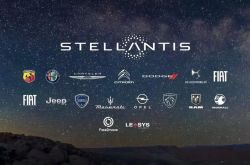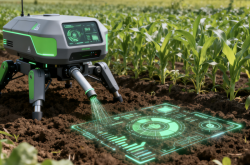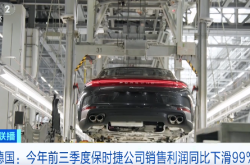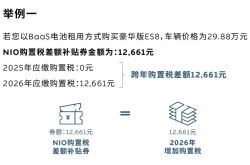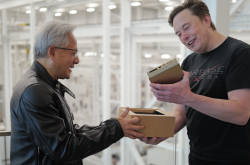Who Will Be the “Apple” of the AI Era?
![]() 10/27 2025
10/27 2025
![]() 437
437
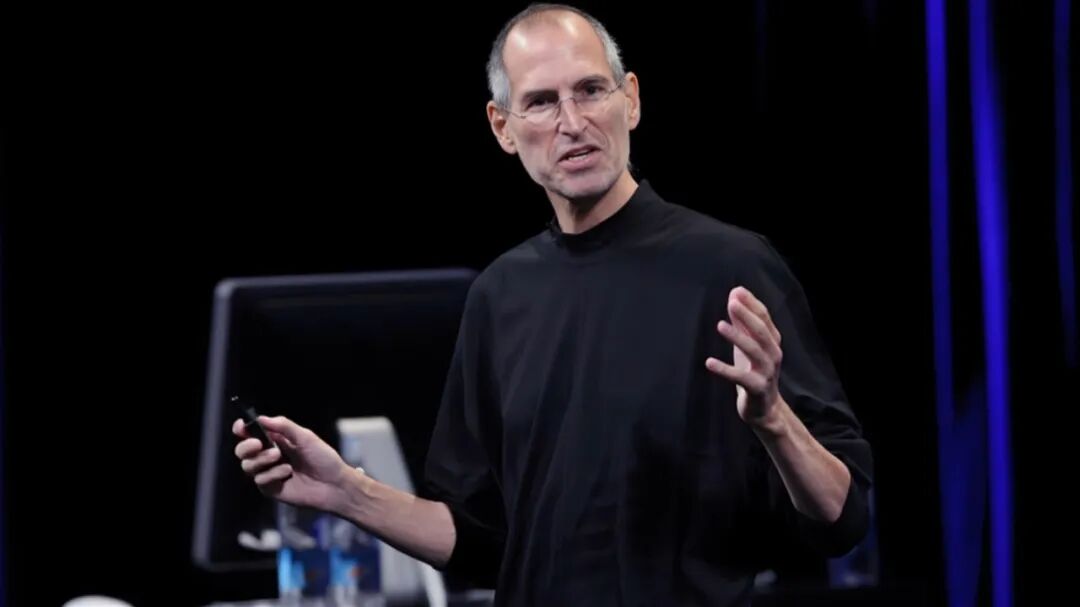
New entrants keep emerging, yet the true game-changer is still on the horizon.
When OpenAI unveiled GPT-4, Silicon Valley investor Andres Hoffman proclaimed, “We stand at the dawn of a computing revolution.” Three years on, this prophecy has become a reality.
However, when viewed through the lens of history, this transformation feels more like a “delayed awakening.” In 2012, AlexNet made a splash in the ImageNet competition, quietly sowing the seeds of deep learning. By 2016, AlphaGo’s victory over Lee Sedol showcased AI’s “extraordinary capabilities.” In 2022, ChatGPT ignited public imagination, sparking a frenzied influx of capital, talent, and computing power.
This year, in particular, the venture capital landscape has reached a historic turning point: AI startups have, for the first time, captured 51% of global venture capital investment, surpassing all other sectors combined. According to CB Insights’ latest report, this data reflects unprecedented capital enthusiasm for artificial intelligence. The United States dominates this wave, contributing 85% of AI funding and 53% of deal volume.
Data indicates that the global AI market investment scale is nearing $200 billion, yet no enterprise with “Apple-level” disruptive power has emerged. Reflecting on Apple’s rise: when Jobs founded Apple in 1976, personal computers were a niche “engineer’s playground.” However, the Macintosh redefined human-computer interaction with its graphical interface and user-friendly experience. The 1998 iMac broke free from the “industrial design shackles” of monotonous electronics. The 2007 iPhone transformed phones from mere communication tools into mobile internet gateways. Each disruption saw Apple complete a closed loop from technological breakthrough to ecosystem construction.
Today, AI players are attempting to replicate this path: large models as the “Macintosh,” hardware as “chips,” and applications as the “App Store.” But the question remains—in AI’s “Cambrian explosion,” who can balance technology, ecology, and commerce to become the new era’s “Apple?”
01
AI Entrepreneurship: Half Flame, Half Water
Reviewing the past three years of AI entrepreneurship reveals three distinct phases.
From 2022 to 2023, large models laid their foundations. ChatGPT’s emergence sparked the generative AI craze, with global tech giants and startups heavily investing in underlying model development.
In 2024, the application exploration phase began. As technologies matured, tools like Cursor, Midjourney, and Perplexity rose rapidly, marking AI’s shift from technological demonstration to practical value creation.
By 2025, the vertical integration phase arrived. AI startups began deeply embedding into industries, seeking commercialization paths in specific scenarios. Among the 169 startups at YC’s Summer 2025 Demo Day, over half focused on AI agents as their core direction. These companies abandoned generic platforms, instead diving deep into verticals targeting tasks that “people won’t do, can’t do well, and are expensive.”
For example, Solva automated insurance claims with AI, achieving $245,000 in annualized revenue within 10 weeks of launch. Autumn specialized in solving complex billing issues for AI companies, adopted by hundreds of AI applications and 40 YC startups. In healthcare, Perspectives Health monitored doctor-patient conversations to generate real-time medical records and forms, saving doctors half their documentation time while growing 25% weekly during pilot stages.
However, prosperity masks looming concerns. AI entrepreneurship shows stark polarization: application-layer companies thrive while infrastructure faces high barriers and resource concentration.
Indeed, data reveals that the global number of newly added AI unicorns actually declined by 12.50% year-over-year and 6.67% quarter-over-quarter, indicating structural market adjustments. The domestic market mirrors this trend—from the early “AI Six Little Tigers” to Hangzhou’s “AI Six Little Dragons,” most firms lack robust ecosystems and sustainable operations, with few achieving scalable revenue.
Capital market attitudes have also grown more rational. Investors now prioritize user retention, unit economics, and computing costs over mere technological novelty. In other words, AI entrepreneurship is moving from a hype-driven frenzy to a value-validation restructuring phase.
02
What Does AI Entrepreneurship Need to Become the Next Apple?
Apple didn’t become Apple through just the iPhone or MacOS, but through a “counterintuitive” underlying logic.
First is strategic resolve: from the 1998 iMac to the 2007 iPhone, Apple spent nine years elevating “consumer electronics” to a “lifestyle brand.” Second is ecological closed-loop: the “hardware-software-service” trifecta of App Store, AirPods, and Apple Watch creates imitable barriers for competitors. Third is organizational resilience: Jobs’ “obsessive” culture and Cook’s “operational philosophy” complement each other, balancing innovation and profitability.
In contrast, the current AI industry faces three critical shortcomings preventing “Apple-level” enterprises: First, the disconnect between technology and commerce—large model developers and hardware firms lack ecological synergy, hindering efficient productization. Second, organizational gaps—most AI companies remain stuck in “engineer thinking,” neglecting user experience and branding. Third, capital misallocation—venture capital over-pursues short-term hype while neglecting long-term infrastructure.
In essence, most AI startups remain “tool providers” without forming true ecological closed loops.
Specifically, domestic AI entrepreneurship shows generational shifts from the “Six Little Tigers” to the “Six Little Dragons.” The early “AI Six Little Tigers” fell into losses due to over-reliance on B2B scenarios, while new entrepreneurs target B2C sectors like AI writing and code generation platforms. Yet these firms face challenges—how to survive amid tech giants’ ecological blockades and open-source model disruptions?
Gartner statistics reveal that in 2023, 62% of global AI startups iterated their products over three times within 18 months, yet only 17% achieved positive commercial cycles. This exposes a harsh reality: AI entrepreneurship is essentially a “computing power leverage” gamble—those optimizing model performance, data quality, and cost control survive.
Investment market shifts also reflect AI’s phase characteristics. Data shows global venture capital investment reached $95.6 billion in Q3 2025, but deal volume hit its lowest since 2016. This indicates investors are becoming more selective, channeling larger funds into mature, high-potential projects.
03
A New Cycle, A New Opportunity
Historically, AI has undergone three waves: the 1980s expert systems collapsed due to data and computing shortages; the 2000s machine learning relied on manual feature engineering, failing to break the “black box” dilemma; the 2020s large models achieved general intelligence through self-supervised learning and massive data, yet implementation remains scenario-dependent.
Compared to previous waves, this large model revolution drives more profound change with a “double-helix structure”—simultaneous technological breakthroughs (large models) and industrial demand (digitization). According to IDC, China’s AI IaaS market surged 122.4% YoY to $1.987 billion in H1 2025. The GenAI IaaS market grew even faster at 219.3%.
Moreover, domestic and overseas AI development show distinct traits.
Overseas markets are driven by foundational model innovation, with companies like OpenAI and Anthropic continually pushing model capabilities. China prioritizes application deployment, leveraging its massive user base and rich scenarios to drive AI commercialization.
From an industry perspective, the core issue isn’t business imagination but shifting supply-demand dynamics. On one hand, computing supply diversifies as domestic and foreign cloud providers develop in-house chips, stabilizing resource availability and pricing. On the other, demand structures reshape—enterprises now seek AI integration into business processes for value closure, rather than mere model training.
Against this backdrop, emerging forces are quietly rising.
Take chip design: Hygon Information’s revenue grew 54.65% in the first three quarters, while Cambricon’s revenue skyrocketed 2,386.38%, showcasing domestic AI chip potential. Meanwhile, LiblibAI, focused on AI visual creation, secured $130 million in Series B funding—the largest domestic AI application deal—indicating capital’s reevaluation of application-layer firms.
In other words, AI is shifting from “resource supply” to “innovation-enabled” drivers.
To some extent, Apple’s birth resulted from the “madness” of Jobs’ 1976 garage startup and the “rationality” of Cook’s 1997 leadership. Who will become the “Apple of the AI era?” The answer may lie in these keywords: long-termism, ecological thinking, and user-centricity. Just as the 1998 iMac broke electronics’ “gray tradition” with rainbow colors, future AI companies must find their “breakthrough points”—not by competing on model parameters but by redefining human-world relationships through technology.


